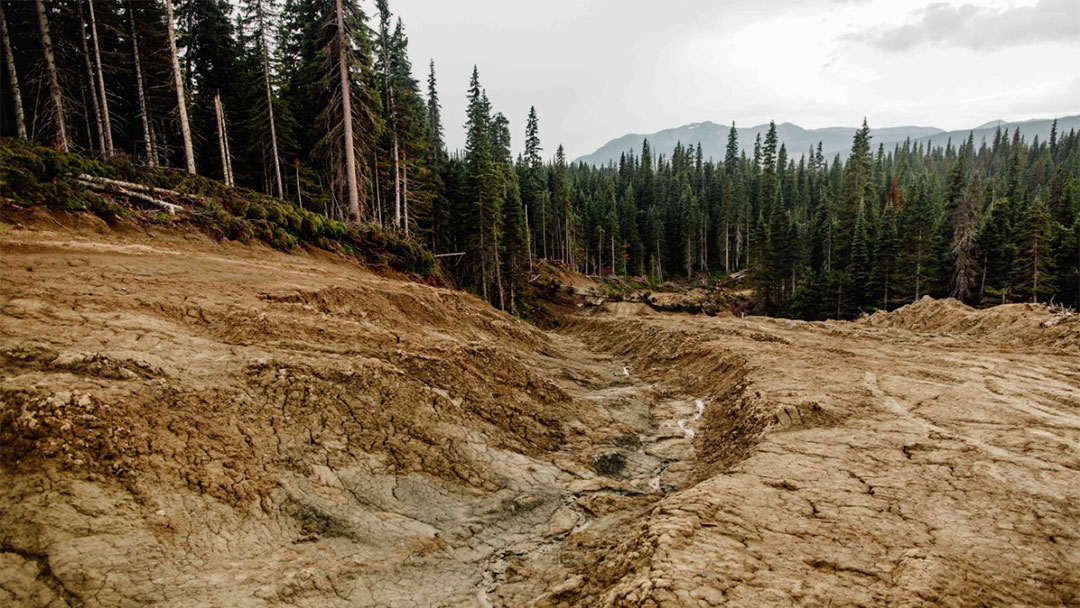The BC government is soliciting feedback on revitalizing the forest industry in the Interior.
We believe that the policy changes suggested below can support true community and ecological sustainability. All of our suggestions pertain to northern wetbelt forests, also known as the boreal and inland rainforests.
The Dean of Forestry at UBC says we should do better with the forests we’ve already converted so that we don’t have to go into the remaining primary and old growth forests. We concur, and this position forms the basis of our recommendations below.
Climate change and forest carbon
Key message: Remove old growth forests of the northern wetbelt from the Timber Harvesting Land Base and focus management on second-growth forests. If we are serious about forest carbon stewardship, we must protect carbon-rich primary forests from industrial forestry.
Human-caused climate change can be partly attributed to the conversion of natural forests into managed ones. Stop using climate change arguments to justify harvesting old forests.
Logging primary forests of the northern wetbelt and converting them to managed forests releases large and essentially unrecoverable amounts of carbon into the atmosphere, even when storage in wood products is factored in. Logging old forests creates a “carbon debt” that cannot easily be repaid.
Only a small fraction of forest carbon ends up stored in wood products; most forest carbon is lost as residues during harvesting and processing.
Old forests store more carbon on-site than young forests. This stored carbon has greater value to us now than what will be sequestered in the future by regenerating plantations. Forest degradation has a massive impact on climate change, and protecting old growth and reforesting are also thought to be the biggest opportunities to help slow it down.
We also need to manage for more than just carbon. Old forests are also key to biodiversity and wildlife habitat.
Wood products innovation
Key message: Force innovation by removing industrial forestry access to primary forests in the northern wetbelt.
According to business experts at Harvard and Forbes, scarcity is the founder and driver of innovation. We must impose scarcity upon the industry to force it to innovate away from logging primary forests. Forestry in BC will not truly innovate unless it is forced to.
At the moment, industrial forestry is liquidating the last interior old growth, operating as if there is limitless primary forest. We have less than a decade’s worth of old growth left in the northern wetbelt.
Engineered wood products and bioproducts can and should come from second-growth forests (i.e. forests that have been logged in the past).
Put a stop to raw logs being exported overseas with no value added.
Industrial-scale bioenergy that depends on primary forest is not innovative. The scale of harvesting required to feed these plants is not sustainable, nor is turning our primary forests into pellets for export.
Forest tenure and fibre supply
Key message: Forests have more value than simply the provision of logs. Restrict forestry tenures in the northern wetbelt to areas that have been previously harvested. Do not create exclusive zones for industrial forestry, such as the “working forest” suggested by the Council of Forest Industries.
Guaranteeing forest companies access to our last old growth forests will not encourage innovation.
Remove primary forests from the Timber Harvesting Land Base and focus management on second-growth forests.
Configure equitable access to second-growth forests so that communities aren’t at a comparative disadvantage.
Communities should control where and how all harvesting happens, not corporate-government working groups.
Annual Allowable Cuts must be brought down to protect species and ecosystems at risk, salmon habitat and carbon rich forests.
Manufacturing capacity and fibre utilization
Key message: Focus on higher-value products that are made locally, are derived from previously-harvested areas and do not require trees from primary forests.
Move away from ‘traditional’ products, such as dimensional lumber, that come from primary and old growth forests.
Focus on products that can be made from smaller, younger, faster-growing trees from managed plantation forests.
Mills should be smaller, local, and employ more people.
Reconciliation with Indigenous communities
Key message: Support Indigenous communities who wish to pursue alternatives such as carbon offset projects in protected old growth forests. Revenues from carbon offset projects should go directly to Indigenous communities.

